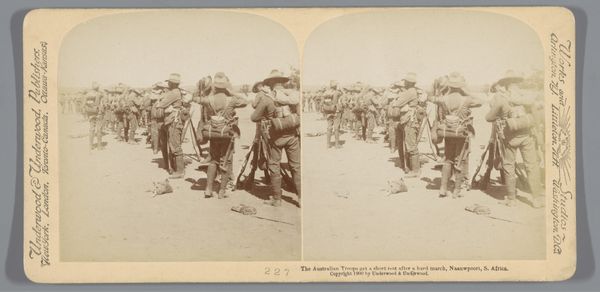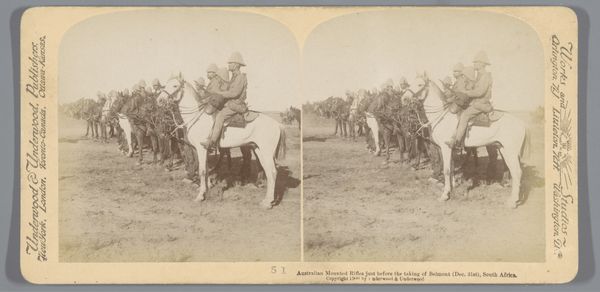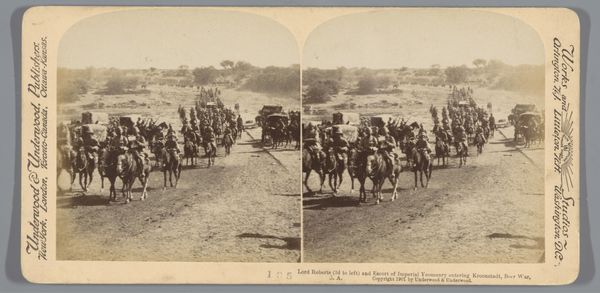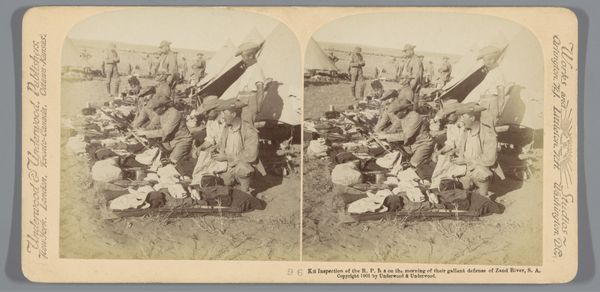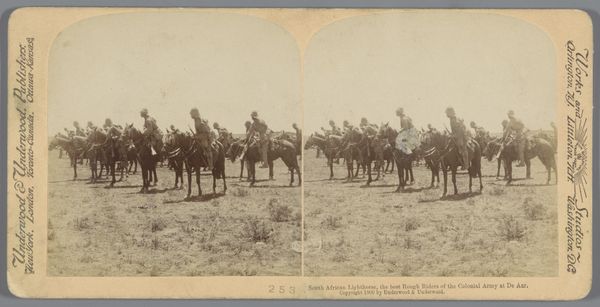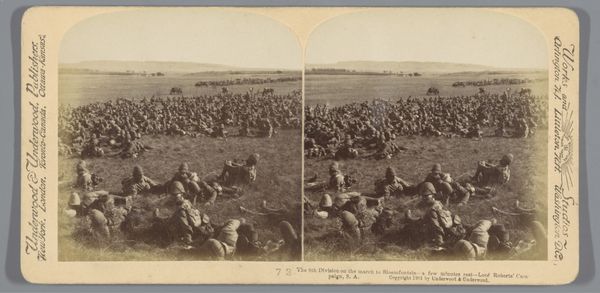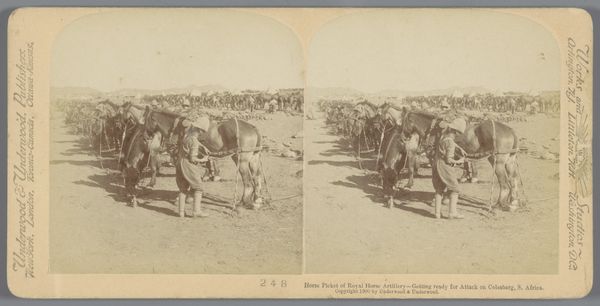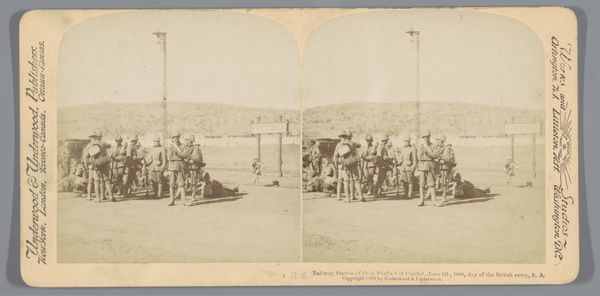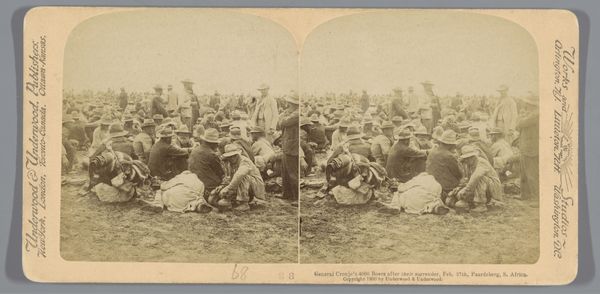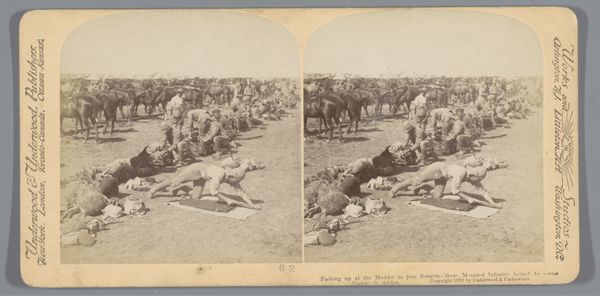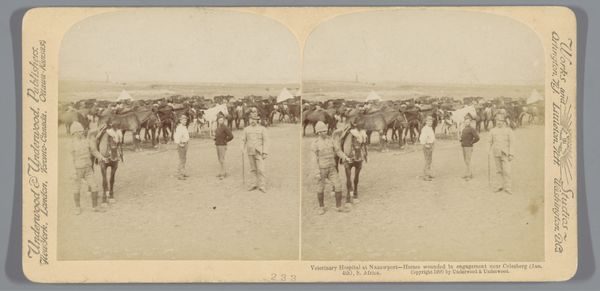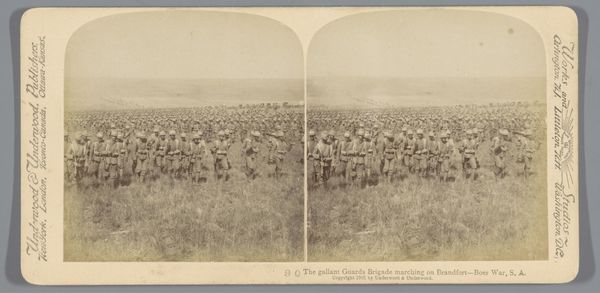
Gezicht op het vervoer van ammunitie naar Kimberley onder het bevel van Lord Roberts (Frederick Sleigh Roberts) 1900
0:00
0:00
print, photography, gelatin-silver-print
# print
#
landscape
#
photography
#
coloured pencil
#
gelatin-silver-print
#
watercolor
#
realism
Dimensions: height 88 mm, width 178 mm
Copyright: Rijks Museum: Open Domain
Curator: Let’s turn our attention to this gelatin-silver print from 1900, a stereo card that gives it this slightly uncanny 3D effect. It's titled "Gezicht op het vervoer van ammunitie naar Kimberley onder het bevel van Lord Roberts (Frederick Sleigh Roberts)". Editor: Whoa. It's strangely peaceful, for what it depicts. Dusty, yes, but calm. Makes me think of those sepia toned memories... almost faded from reality. There's something about the rows of figures slowly, inevitably, moving forward that makes it also seem ominous. Curator: Ominous is a good word. The photograph offers insight into the logistics and material conditions of warfare during the Second Boer War. We see the literal supply chain, the movement of resources – in this case, ammunition - which were of course vital to colonial campaigns and control in South Africa. It shows the means and mode by which resources are accumulated, circulated, and consumed. Editor: The poor horses, they seem so stoic hauling all of that weaponry into place. And all those nearly identical figures, almost a uniform of suppression on the landscape itself. There's little visual information here about place—the picture emphasizes purpose instead. It’s about movement and function, devoid of real depth... so cold and linear. Curator: The photographic process is vital to consider here; it wasn’t about artistic intervention, it was meant to capture, record and then circulate an understanding of power and British imperial project through a reproducible medium. Each print like this became a way of reaffirming control but also influencing public perceptions about the necessity of the war. Editor: The distance collapses. It’s meant to normalize. As I think about this now, maybe my original perception was naive. Peaceful is perhaps wrong. Subdued might be better. Curator: Indeed. Considering the photograph as a material object circulating within a specific economic and social framework shifts our understanding. It makes visible how images could be wielded in service of imperial expansion and influence. Editor: That repetitive movement... it’s still so evocative and sad in many ways. Makes me consider the labor that fueled these monumental clashes, the horses, the workers, and ultimately the colonized populations. Curator: Precisely, and examining this through its medium gives context for our own consumption of similar images. Editor: Right! Well I see it differently now—what at first seemed subdued reveals an unnerving layer, and that changes how I feel about it.
Comments
No comments
Be the first to comment and join the conversation on the ultimate creative platform.

